« Je suis orientaliste et iraniste : tout cela et rien que cela »
A Matthias Körger
Henry Corbin est né à Paris le 14 avril 1903, dans une famille protestante – sa mère mourra quelques jours après sa naissance. Une licence de philosophie en 1925 et des cours avec Gilson l’orientent vers l’étude de l’arabe (Langues O) et l’École Pratique des Hautes Études d’où il sort diplômé en 1928.
La même année, il entre à la Bibliothèque Nationale où il rencontre Louis Massignon dont « une inspiration du ciel » va décider de sa vocation : « Je lui parlais des raisons qui m’avaient entraîné comme philosophe à l’étude de l’arabe, des questions que je me posais entre la philosophie et la mystique, de ce que je connaissais, par un assez pauvre résumé en allemand, d’un certain Sohravardî… Alors Massignon eut une inspiration du ciel. Il avait rapporté d’un voyage en Iran une édition lithographiée de l’œuvre principale de Sohravardî, Hikmat al-Ishrâq : « la Théosophie orientale ». Avec les commentaires, cela formait un gros volume de plus de cinq cents pages. « Tenez, me dit-il, je crois qu’il y a dans ce livre quelque chose pour vous. » Ce quelque chose, ce fut la compagnie du jeune shaykh al-Ishrâq qui ne m’a plus quitté au cours de ma vie » [1]. De cet épisode date ce qu’on pourrait appeler la naissance spirituelle de Henry Corbin, en ce sens, comme il le dira lui-même, que par cette rencontre, « [son] destin pour la traversée de ce monde était scellé ». Sohravardî incarne, en effet, un certain « style de conscience et de vie spirituelle » auquel Henry Corbin restera fidèle toute sa vie, qui ajoute d’ailleurs que le sens et la portée de la philosophie du shaykh al-Ishrâq débordent son cadre : « Elle est une forme de l’aventure humaine, qu’il importe à l’homo viator de méditer spécialement de nos jours. »
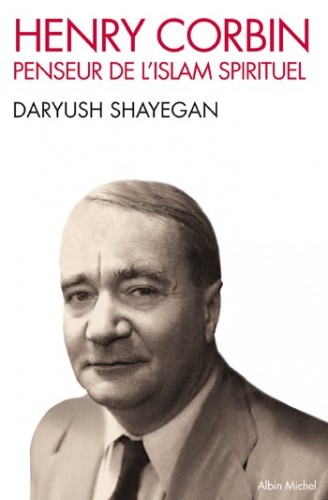 Les années suivantes, jusqu’en 1936, le voient suivre les cours de Massignon, Gilson, Puech, Benveniste, Koyré, à Paris et surtout accomplir plusieurs séjours en Allemagne, à Bonn, Hambourg et Marburg, où il découvrira Swedenborg, « dont l’œuvre immense, dira-t-il, allait ainsi m’accompagner tout au long de ma vie », et où il fera la connaissance de Rudolf Otto, en 1930 : « Comment dire l’éblouissement d’un jeune philosophe débarquant à Marburg au début de juillet 1930 ? L’enchantement des lieux, de cette « colline inspirée » ne vivant que par et pour l’Université, les magnifiques forêts alentour… ». Quelques années plus tard, c’est à Freiburg, durant le printemps 1934, qu’il rendra visite au philosophe Heidegger – qu’il rencontrera à plusieurs reprises ensuite et dont il sera le premier traducteur en France, avec Qu’est-ce que la métaphysique ? en 1939.
Les années suivantes, jusqu’en 1936, le voient suivre les cours de Massignon, Gilson, Puech, Benveniste, Koyré, à Paris et surtout accomplir plusieurs séjours en Allemagne, à Bonn, Hambourg et Marburg, où il découvrira Swedenborg, « dont l’œuvre immense, dira-t-il, allait ainsi m’accompagner tout au long de ma vie », et où il fera la connaissance de Rudolf Otto, en 1930 : « Comment dire l’éblouissement d’un jeune philosophe débarquant à Marburg au début de juillet 1930 ? L’enchantement des lieux, de cette « colline inspirée » ne vivant que par et pour l’Université, les magnifiques forêts alentour… ». Quelques années plus tard, c’est à Freiburg, durant le printemps 1934, qu’il rendra visite au philosophe Heidegger – qu’il rencontrera à plusieurs reprises ensuite et dont il sera le premier traducteur en France, avec Qu’est-ce que la métaphysique ? en 1939.
L’Iran et l’Allemagne furent assurément les deux patries d’élection de Henry Corbin. L’essentiel, toutefois, est de comprendre, comme il y invite lui-même, que ces deux patries furent, dans sa vie, « les points de repères géographiques d’une Quête qui se poursuivait en fait dans les régions spirituelles qui ne sont point sur nos cartes. » Il dira à ce sujet : « Je ne suis ni un germaniste ni même un orientaliste, mais un philosophe poursuivant sa Quête partout où l’Esprit le guide. S’il m’a guidé vers Freiburg, vers Téhéran, vers Ispahan, ces villes restent pour moi essentiellement des « cités emblématiques », les symboles d’un parcours permanent »[2].
Henry Corbin s’était marié en 1933 avec Stella Leenhardt, « Stella matutina », à qui il dédicacera son œuvre majeure, En Islam iranien, en 1971, en ces termes : « Stellae consorti dicatum ». Parmi les amitiés de ces années, il faut signaler celle de Jean Baruzi et surtout celle du philosophe russe Nicolas Berdiaev. C’est de lui qu’il tient l’idée d’une Eglise de Jean succédant à l’Eglise de Pierre, qui inaugurerait le règne du Paraclet (selon Joachim de Flore) et qui serait, « non pas la tutrice des pauvres », mais l’Eglise éternelle et mystérieuse « découvrant en elle le vrai visage de l’homme et de son extase vers les sommets »[3].
En 1939, Henry Corbin part pour une mission de six mois à l’Institut français d’archéologie d’Istanbul où la guerre le retiendra finalement jusqu’en 1945. C’est là qu’il préparera l’édition des œuvres de Sohravardî : « Au cours de ces années, pendant lesquelles je fus le veilleur du petit Institut français d’archéologie mis en veilleuse, j’appris les vertus inestimables du Silence, de ce que les initiés appellent la « discipline de l’arcane » (en persan ketmân). L’une des vertus de ce Silence fut de me mettre seul à seul en compagnie de mon shaykh invisible (…). A longueur de jour et de nuit, je traduisis de l’arabe (…). Au bout de ces années de retraite, j’étais devenu un Ishrâqî, et l’impression du premier tome des œuvres de Sohravardî était presque achevée »[4]. A la mi-septembre 1945, il part pour Téhéran et lance le projet d’un département d’Iranologie au sein du nouvel Institut français. Il en assurera la direction jusqu’en 1954 et créera la fameuse « Bibliothèque iranienne ».
Cette « Bibliothèque iranienne » répondait pour Henry Corbin à un double objectif qui était, d’une part, de prouver l’existence d’une « philosophie proprement et originairement shî’ite » et, d’autre part, que l’on prenne « au sérieux », selon ses mots, le projet sohravardien de « ressusciter la théosophie des Sages de l’ancienne Perse ». L’objectif a été pleinement atteint, et nous sommes nombreux aujourd’hui à se reconnaître une dette envers Henry Corbin qui nous aura fait découvrir non seulement Sohravardî, mais aussi Haydar Âmolî, Mollâ Sadrâ Shîrâzî et surtout Rûzbehân Baqlî Shîrazî, pour ne rien dire des extraordinaires textes ismaéliens qui se trouvent désormais à notre disposition, en langue française. A la mort de Henry Corbin, Mircea Eliade fera remarquer : « Il est mort en ayant accompli à peu près tout ce qu’il s’était promis de réaliser », et il devait avoir en tête certainement cette « Bibliothèque iranienne ». C’est d’ailleurs l’existence de celle-ci qui a permis à son promoteur d’écrire, vers la fin de sa vie, en 1978 : « Nous n’en sommes plus, certes, à croire que la pensée en Islam ne soit représentée que par les cinq ou six grands noms de philosophes qui furent connus de la Scolastique latine. Mais combien faudra-t-il de temps encore pour que l’on soupçonne le nombre de monuments de pensées et de chefs-d’œuvre spirituels, tant en arabe qu’en persan, dont l’homme cultivé de l’Occident a généralement tout ignoré jusqu’ici ? Combien plus de temps encore faudra-t-il pour que le trésor de leur pensée rentre dans ce que l’on appelle le « circuit culturel », et vienne fructifier jusque dans les colloques de bonne volonté qui pourraient enfin aborder l’essentiel » [5].
Cela pourrait constituer assurément le programme d’une Unité de recherche « Henry Corbin », consacrée à l’Iran.
Pendant quelque cinquante ans la propriété de Madame Fröbe-Kapteyn, à Ascona, « sur les rives du lac majeur », en Suisse, a été le centre symbolique d’une communauté de chercheurs spirituels, parmi lesquels on peut citer outre Corbin, Massignon, Jung, Denis de Rougemont, Rudolf Otto, Gershom Scholem, Mircea Eliade, etc. Henry Corbin a donné sa première conférence à Ascona en 1949, inaugurant une collaboration qui durera jusqu’à sa mort. Or, Eranos a représenté infiniment pour lui : « Ce que nous voudrions appeler le sens d’Eranos, et qui est aussi tout le secret d’Eranos, c’est qu’il est notre être au présent, le temps que nous agissons personnellement, notre manière d’être. C’est pourquoi nous ne sommes peut-être pas « de notre temps », mais nous sommes beaucoup mieux et plus : nous sommes notre temps. Et c’est pourquoi Eranos n’a même pas de dénomination officielle ; ni de raison sociale collective. Ce n’est ni une Académie, ni un Institut, pas même quelque chose que l’on puisse, suivant le goût du jour, désigner par des initiales. Non, ce n’est pas un phénomène de notre temps »[6].
A partir de 1955, Henry Corbin partagera son temps entre Paris et Téhéran, entre son enseignement à l’Ecole Pratique des Hautes Etudes (de janvier à juin)[7], où il succèdera à Louis Massignon, à la Section des Sciences Religieuses[8], et la direction du Département d’Iranologie de l’Institut franco-iranien (docteur honoris causa de l’Université de Téhéran en 1958).
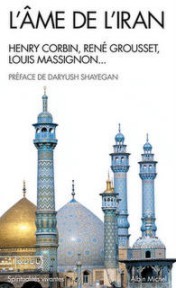 En 1959, paraît son Imagination créatrice dans le soufisme d’Ibn ‘Arabî dont la rédaction fut, selon ses propres termes, « un nouveau point de départ, un moment privilégié dont la clarté illumina la route suivie depuis lors », puis en 1961, grâce à Marie-Madeleine Davy, Terre céleste et corps de résurrection [9]. Ces deux ouvrages connaîtront l’un et l’autre une deuxième édition, respectivement en 1975 et 1978.
En 1959, paraît son Imagination créatrice dans le soufisme d’Ibn ‘Arabî dont la rédaction fut, selon ses propres termes, « un nouveau point de départ, un moment privilégié dont la clarté illumina la route suivie depuis lors », puis en 1961, grâce à Marie-Madeleine Davy, Terre céleste et corps de résurrection [9]. Ces deux ouvrages connaîtront l’un et l’autre une deuxième édition, respectivement en 1975 et 1978.
D’autres ouvrages seront publiés, après 1959, qui récapitulent l’ensemble des travaux de Henry Corbin en matière d’ésotérisme ou de gnose. Il est indispensable de bien comprendre que l’ésotérisme selon Henry Corbin, c’est d’abord la théosophie mystique et surtout la gnose, en relation avec l’enseignement qu’il avait retiré de la fréquentation des textes ismaéliens et qui lui fera affirmer : « La gnose shî’ite est par excellence l’ésotérisme de l’Islam » [10]. En cela, bien sûr, Henry Corbin parait fort éloigné d’un René Guénon, par exemple, et de l’ésotérisme « traditionnel », tandis qu’en termes d’ésotérisme chrétien, cette orientation de son œuvre l’inscrit plutôt dans la lignée de Swedenborg, de Novalis, et surtout de Jacob Boehme. Parmi ces ouvrages, il faut citer, par exemple, son Histoire de la philosophie islamique, en 1968. C’est aussi son Anthologie des philosophes iraniens depuis le XVIIème siècle jusqu’à nos jours. Ce sont surtout ses quatre volumes d’En Islam iranien, publiés à partir de 1971.
En 1974 vient sa retraite universitaire pendant laquelle il continue à donner des conférences et à séjourner en Iran. Il fonde aussi à Paris une Université Saint-Jean de Jérusalem qu’il définit comme un « Centre international de recherche spirituelle comparée ». « Son esprit : celui d’une chevalerie spirituelle » et quant à sa finalité : « Ménager enfin, écrira-t-il, en la cité spirituelle de Jérusalem, un foyer commun, qui n’a jamais encore existé, pour l’étude et la fructification spirituelle de la gnose commune aux trois grandes religions abrahamiques, bref l’idée d’un œcuménisme abrahamique fondé sur la mise en commun du trésor caché de leur ésotérisme »[11]. Cette idée a occupé les dernières années de la vie de Henry Corbin Malheureusement son Université de Saint Jean de Jérusalem ne lui a pas survécu. Sans doute parce que son ambition était trop élevée, et pourtant s’il est un message de son oeuvre qu’il conviendrait de prolonger, de revivifier, c’est bien celui d’une communauté des ésotéristes « de partout et toujours » unis dans ce projet commun : « Faire face ensemble, nous tous les Ahl al-Kitâb [les Gens du Livre], écrivait-il, en reprenant ensemble notre aventure théologique depuis les origines, pour qu’au lieu de nous séparer, l’aventure cette fois nous rassemble. »
Henry Corbin meurt à Paris le 7 octobre 1978.
Il n’aura pas de disciples – pas plus que René Guénon – « Il était et reste un maître parce qu’il libérait et libère en chacun de ceux qui le lisent son propre futur »[12], dira de lui Christian Jambet. Mais aussi son œuvre ouvre des perspectives qui ne peuvent plus être ignorées, parce qu’elles intéressent notre avenir, l’avenir même de l’Occident. Sous ce rapport, la comparaison avec l’œuvre d’un René Guénon ne manque pas d’intérêt. C’est ainsi que Michel Le Bris remarque : « Voyez comme l’Orient spirituel de Henry Corbin est éloigné de l’Orient de Guénon ! L’un y apprend à lire, en retour, ce qui fut, sans doute, l’âme vivante de l’Occident, l’autre, quoiqu’il prétende, y trouve le prétexte de s’en écarter toujours plus – la lecture qu’il fait des mystiques d’Occident, de ce point de vue, me paraît catastrophique. L’un veut réconcilier la philosophie des « Orientaux de l’Orient » et des « Orientaux de l’Occident », pour la chance d’une mutation de l’Occident, (…) – l’autre tire une sombre jouissance de la prédication de sa mort fatale »[13].
Pour Henry Corbin, il existait autant d’« orientaux » en Occident qu’en Orient. En aucune manière il ne soumettait la connaissance ésotérique à l’adhésion à une religion et c’est aussi en cela que son propos intéresse notre futur : « Chacun des ‘orafâ [des gnostiques] d’Orient et d’Occident, écrit-il, ne peut penser et peser les choses qu’en termes d’intériorité et d’intériorisation, ce qui veut dire faire en soi-même une demeure permanente aux philosophies, aux religions, vers lesquels le conduit sa Quête. Et il ne peut que garder son secret : Secretum meum mihi. Le secret du château de l’Âme. »
Pour conclure ces aperçus biographiques, on donnera le témoignage d’une Iranienne, Shusha Guppi : « Henry Corbin était un mystique protestant, espèce rare parmi les Français, et il parlait de la façon la plus émouvante de ce qu’il appelait « le génie de la Perse », qui avait produit de grands philosophes et d’immenses poètes, avait presque inventé l’amour, et lui avait en tout cas donné, en poésie, son expression la plus haute pour des générations et des générations futures. Puis exprimant son admiration pour mon pays d’adoption, il me parla des mystiques anglais, tels que Julienne de Norwich, et de toute cette tradition ésotérique dont le monde anglo-saxon a vu le déclin à dater de la Réforme. Nous parlâmes aussi de politique et d’une manière générale, de l’état du monde. Il était très au fait, et se montra préoccupé, de problèmes fondamentaux : la démographie, le pillage des ressources naturelles, l’écart qui allait s’élargissant entre nantis et démunis, avec toutes ses conséquences… Je l’entends encore conclure :
- A propos d’un malade, on dit que son état est grave mais pas désespéré; à propos du monde, on pourrait dire que son état est désespéré, mais qu’heureusement tout cela n’a rien de grave! »[14].
Sohravardî
Le maître de Henry Corbin aura été finalement un jeune théosophe perse, Sohravardî, mort tragiquement le 29 juillet 1191, à l’âge de 36 ans, dont le projet était rien de moins que de « ressusciter la philosophie de la Lumière des sages de l’ancienne Perse ». De ce projet grandiose que Sohravardî paiera de sa vie, puisqu’il fut condamné à mort à Alep, Henry Corbin en a été le commentateur « oriental » en Occident, mais le mot « oriental » est ici placé entre guillemets, selon ce que Henry Corbin en dira dans son Prélude à L’Archange empourpré : « Le Shaykh al-Ishrâq nous a appris les sens spirituel des mots « Orient » et « Occident » (…). Lors donc que nous parlons avec lui de « l’exil occidental », il ne s’agit pas d’une mise en accusation des pays d’occident au sens géographique, pas plus que, lorsque nous parlons de « théosophie orientale », il s’agit tout simplement de se rendre tout simplement à l’Orient géographique pour la trouver » [15].
Cette précision faite, la théosophie « orientale » (hikmat al-Ishrâq) de Sohravardî a inspiré nombre des recherches de Henry Corbin, à commencer par la doctrine ishrâqî elle-même et ses développements à travers les œuvres de ses disciples qu’il nomme « les Platoniciens de Perse ». Mais, elle a surtout influé sa Quête personnelle. Pour cette raison, il n’est pas inutile de rappeler, après lui, les caractéristiques essentielles de la doctrine ishrâqî qui sont, d’une part, « la volonté délibérée de renouer avec la théosophie de la Lumière professée par les sages de l’ancienne Perse », et, d’autre part, une « spiritualité dont la caractéristique est de conjoindre indissociablement la recherche philosophique de la Connaissance et la fructification de cette Connaissance en conversion, une métamorphose intérieure de l’homme ». Il s’agit là d’un thème majeur de Henry Corbin et qui fait de lui un gnostique, au sens où la gnose est essentiellement une « connaissance salvifique », et même une « connaissance amoureuse » au sens où l’entendra cette fois un autre de ses maîtres, Rûzbehân Baqlî de Shîrâz (1128-1209) dont il parlera comme d’un Maître Eckhart « qui aurait écrit quelque chose comme l’histoire de Tristan et Yseult ». La formule est heureuse, s’agissant de l’« Enfant divin », comme l’appelait Louis Massignon[16].
Pour revenir à Sohravardî deux œuvres en particulier méritent l’attention, Le Récit de l’Exil occidental qui est un traité initiatique, portant sur la voie ésotérique qui conduit « l’exilé » dans le pays d’Occident jusqu’à sa patrie « orientale », sa vrai patrie. (Nous en avons parlé ce matin). Le second traité s’intitule le Vade-mecum des fidèles d’amour. Il s’agit également d’un récit initiatique qui éclaire singulièrement l’expérience intérieure d’un Dante et de ceux que l’on appelle après lui les fedeli d’amore.
A l’origine de toute initiation à l’Ordre des fedeli d’amore se place une expérience amoureuse – qui est le point de départ d’un développement spirituel, au cours duquel l’amour deviendra un amour de passion[17]. Mais ce développement reste réservé à un petit nombre : « Amour n’ouvre pas à n’importe qui la voie qui conduit à lui ». Comme pour n’importe quelle initiation, l’être épris doit en manifester les dispositions. Mais dès qu’Amour en vient à constater qu’il en a les aptitudes, il « envoie vers lui Nostalgie qui est son confident et son délégué, afin que celui-ci purifie la demeure et n’y laisse entrer personne ». Il s’agit donc d’une première étape dans le développement personnel de l’être sincèrement épris qui est celle de l’initiation. Ensuite, « il faut qu’Amour fasse le tour de la demeure et descende jusque dans la cellule du cœur. Il détruit certaines choses ; il en édifie d’autres ; il fait passer par toutes les variantes du comportement amoureux ». C’est au terme de cette seconde étape que se produit « l’illumination » – ce que symbolise le Cuore gentile selon Dante, à savoir « le cœur purifié, c’est-à-dire vide de tout ce qui concerne les objets extérieurs, et par là-même rendu apte à recevoir l’illumination intérieure ». C’est alors qu’Amour « se résout à se rendre à la cour de Beauté ». Dans cette dernière étape, l’être épris devra connaître « les étapes et les degrés par lesquels passent les fidèles d’amour » et surtout il devra « donner son assentiment total à l’amour ». C’est à cette condition que l’initié devient un fidèle d’amour et « c’est après cela seulement que seront données les visions merveilleuses ».
Rulman Merswin et l’Île verte
On ne peut manquer d’évoquer, même brièvement, à propos de l’itinéraire spirituel de Henry Corbin, la figure de Rulman Merswin.
Rulman Merswin, né en 1307 et mort en 1382, issu d’une importante famille de banquiers strasbourgeois, se retira de la vie publique pour entrer en une retraite spirituelle de quatre années (Tauler est alors son confesseur), après lesquelles il fit l’acquisition d’un ancien couvent bénédictin à l’abandon, en un lieu dit l’Île Verte : « L’Île Verte de Strasbourg, écrit Henry Corbin, fut un centre spirituel des chevaliers johannites où se développa au XIVème siècle une forme de spiritualité caractérisée par le nom de ceux qui en sont le centre, à savoir le nom d’ « Amis de Dieu » (Gottesfreunde) » [18]. « Chevaliers johannites », simplement du fait que la présence ecclésiale dans ce couvent de l’Île Verte fut confiée à l’Ordre des Chevaliers hospitaliers de Saint Jean de Jérusalem, tandis que Rulman Merswin précisait que le couvent devait être « une maison de refuge où puissent se retirer tous les hommes honnêtes et pieux, laïcs ou ecclésiastiques, chevaliers, écuyers et bourgeois, qui désireraient fuir le monde et se consacrer à Dieu, sans cependant entrer dans un ordre monastique ».
Mais il y a plus dans l’histoire de l’Île Verte. Rulman Merswin et les Amis de Dieu se trouvèrent rapidement en relation avec un personnage mystérieux qui va les guider dans la voie spirituelle qu’ils se sont choisie, par une série de missives (de 1363 à 1380) et d’écrits, parmi lesquels on peut citer Le Livre du maître de la Sainte Écriture, Le Livre des Cinq hommes « qui décrit la société idyllique du Haut Pays ».
Pour Henry Corbin, il paraît superflu de rechercher l’identité de cet « Ami de Dieu du Haut Pays », tout comme il serait vain de tenter de localiser le Haut Pays sur une carte de géographie, car « personne n’en eut connaissance, qui ne s’en approcha par la voie intérieure ». L’essentiel est aux yeux de Corbin que l’« Ami de Dieu du Haut Pays » ait été, selon ses propres termes, « le pôle des Amis de Dieu de l’Ile Verte des Johannites », autrement dit qu’il ait été le Maître intérieur de Rulman Merswin lui-même. Or, qui est le Maître intérieur ? C’est celui qui guide l’initié, non plus en ce monde-ci, mais bien dans les contrées au-delà de l’Orient du monde terrestre.
Tel est le secret de l’identité de l’« Ami de Dieu du Haut Pays ».
Henry Corbin assimila ce dernier au XIIème Imâm [19] de la tradition shî’ite et en tira la conclusion qu’il existe en ce monde « une élite spirituelle commune aux trois rameaux de la tradition abrahamique », dont l’éthique « prend origine aux mêmes sources et vise la même hauteur d’horizon. »
Le monde imaginal
« Le contact entre Dieu et l’homme se fait « entre Ciel et Terre », dans un monde médian et médiateur »
Selon le mot du philosophe Christian Jambet, Henry Corbin a ressuscité « la métaphysique de l’imaginal en terre d’islam ». Et l’on peut tenir cette « résurrection » comme un apport les plus significatifs de son œuvre. Deux ouvrages, déjà cités, permettent de préciser la notion de « monde imaginal ».
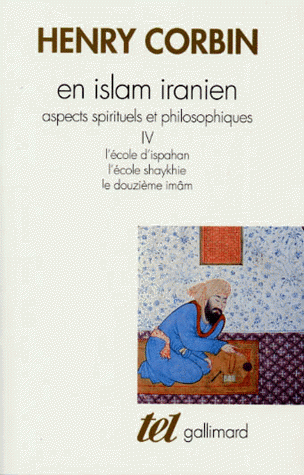 Dans le premier de ces ouvrages, L’Imagination créatrice dans le soufisme d’Ibn ‘Arabî, il dira : « Que l’on entende pas le mot « images » au sens où de nos jours on parle à tort et à travers d’une civilisation de l’image ; il ne s’agit jamais là que d’images restant au niveau des perceptions sensibles, nullement de perceptions visionnaires. Le mundus imaginalis de la théosophie mystique visionnaire est un monde qui n’est plus le monde empirique de la perception sensible, tout en n’étant pas encore le monde de l’intuition intellective des purs intelligibles. Monde entre-deux, monde médian et médiateur, sans lequel tous les événements de l’histoire sacrale et prophétique deviennent de l’irréel, parce que c’est en ce monde-là que ces événements ont lieu, ont leur « lieu ».
Dans le premier de ces ouvrages, L’Imagination créatrice dans le soufisme d’Ibn ‘Arabî, il dira : « Que l’on entende pas le mot « images » au sens où de nos jours on parle à tort et à travers d’une civilisation de l’image ; il ne s’agit jamais là que d’images restant au niveau des perceptions sensibles, nullement de perceptions visionnaires. Le mundus imaginalis de la théosophie mystique visionnaire est un monde qui n’est plus le monde empirique de la perception sensible, tout en n’étant pas encore le monde de l’intuition intellective des purs intelligibles. Monde entre-deux, monde médian et médiateur, sans lequel tous les événements de l’histoire sacrale et prophétique deviennent de l’irréel, parce que c’est en ce monde-là que ces événements ont lieu, ont leur « lieu ».
Dans le second, Corps spirituel et terre céleste, le Prélude à la deuxième édition (1978) s’intitule « Pour une charte de l’Imaginal »[20]. On y lit ceci : « La fonction du mundus imaginalis et des Formes imaginales se définit par leur situation médiane et médiatrice entre le monde intelligible et le monde sensible. D’une part, elle immatérialise les Formes sensibles, d’autre part, elle « imaginalise » les formes intelligibles auxquelles elle donne figure et dimension. Le monde imaginal symbolise d’une part avec les Formes sensibles, d’autre part avec les Formes intelligibles. C’est cette situation médiane qui d’emblée impose à la puissance imaginative une discipline impensable là où elle s’est dégradée en « fantaisie », ne secrétant que de l’imaginaire, de l’irréel, et capable de tous les dévergondages. »
L’apport le plus remarquable chez Henry Corbin est par conséquent d’avoir « revivifié » pour l’Occident ce mundus imaginalis « qui n’est ni le monde empirique des sens ni le monde abstrait de l’intellect » – dont la notion – et donc la réalité – s’était éclipsée depuis plusieurs siècles de pieux agnosticisme et de Lumières. On conviendra qu’il s’agit de quelque chose qui éclaire considérablement le sens de notre pèlerinage vers nos origines, vers l’Orient, cette nostalgie du « paradis perdu », qui aiguise notre sentiment d’exil en ce monde et avive, pour les uns, le désir eschatologique du monde à venir, pour les autres, l’attente de leur délivrance.
L’ismaélisme
« Il y a l’ismaélisme et rien »
L’ismaélisme est une branche du chiisme.
Que sait-on de l’ismaélisme ? Généralement, on en connaît la légende des Assassins et du Vieux de la Montagne. On connaît également le prodigieux essor culturel et spirituel de la dynastie des Fatimides au Caire (909-1130). On sait parfois qu’il existe des Ismaéliens au Yémen et aussi que l’Aga Khan est le chef spirituel d’une importante communauté ismaélienne. Pourtant l’ismaélisme est beaucoup plus que ces quelques clichés. Nous en donnerons ce bref aperçu historique.
Ja’far al-Sadîq, le sixième Iman de la descendance de ‘Alî ibn Tâlib, avait désigné comme successeur et héritier spirituel son fils aîné Ismâ’il. Celui-ci meurt prématurément en 754 et Ja’far al-Sâdiq transfère alors son investiture à Mûsâ al-Kâzim, frère cadet d’Ismâ’il, qui deviendra le septième imâm de la lignée, en 756. Mais, autour du jeune Ismâ’il s’était constitué un groupe de disciples particulièrement fervents et de tendance « ultra-chiites », selon le mot de Corbin, qui refusèrent ce transfert et reportèrent leur allégeance sur la personne du fils d’Ismâ’il, Muhammad. Ce sont les premiers Ismaéliens qui forment ce que Henry Corbin désigne comme le proto-ismaélisme. Suit une période assez mal connue durant laquelle se succèdent les descendants de Muhammad, jusqu’à l’avènement de la dynastie des Imams Califes fatimides du Caire. Celle-ci commence en 909, avec le règne de Obadayallah al-Mahdi (mort en 934). Mais deux siècles plus tard, en 1094, le huitième Imam Calife, Al-Mustansir bi’allah, donne son investiture à son fils cadet al-Mustali bi’llâh, au lieu de Nizâr son fils aîné. La communauté fatimide se divise alors et les partisans de Nizâr fondent ce qu’on appellera l’Ismaélisme réformé d’Alamût, du nom de cette forteresse, au sud-ouest de la Mer Caspienne, qui en devient le centre. C’est là que le 8 août 1164, l’Imam Hassan ‘alâ dhikrihi’s-salâm, grand maître d’Alamût, proclame la Grande Résurrection : « Ce qu’impliquait la proclamation, écrit Henry Corbin, ce n’était rien de moins que l’avènement du d’un pur Islam spirituel, libéré de tout esprit égalitaire, de toute servitude de la Loi, une religion personnelle de la Résurrection, parce qu’elle fait découvrir et vivre le sens spirituel des Révélations prophétiques »[21].
L’ismaélisme s’inscrit ensuite dans une hiérohistoire.
Chaque religion est apparue, en effet, successivement à l’un des six « jours » (six époques) de la « création du cosmos religieux ». Ainsi les Mazdéens sont-ils apparus au troisième jour, les Juifs au quatrième, les Chrétiens au cinquième et les Musulmans au sixième jour. Chaque religion a voulu arrêter à son propre « jour » cette création du cosmos religieux, or si chaque « jour » ou période est inaugurée par un prophète, elle se prolonge par une succession d’Imams, jusqu’à ce que Dieu suscite un nouveau « jour ». Ces saints Imams qu’ils soient visibles ou invisibles sont les dépositaires du sens caché de la Loi qui préside à chaque période, de cette Religion divine qui forme l’ésotérisme de la religion littérale et qui est professée par les Amis de Dieu, les disciples, les fidèles de l’Imam. Ce sont eux qui « propagent leur appel en secret et en observant strictement la discipline de l’arcane, car le monde terrestre ne peut jamais resté privé, fût-ce un seul instant, de celui qui en est le contrepoids devant Dieu, qu’Il soit manifesté publiquement et à découvert, ou qu’il doive resté caché et incognito »[22].
Ce « contrepoids », c’est l’Imam, le « pôle mystique » de notre monde[23].
Mais l’Imam est beaucoup plus que cela, ou plutôt de sa fonction de « pôle mystique », découlent nombre d’autres attributions.
Il est celui qui détient le sens ésotérique de la Loi révélée par le Nâtiq, le prophète « énonciateur de la Loi religieuse »[24], et par conséquent le « dépositaire » de la Religion divine.
Il est aussi le Pôle céleste et le Maître intérieur de chacun de ses fidèles.
Il est enfin la « théophanie éternelle », grâce à quoi les adeptes, les amis de Dieu, contemplent le visage divin.
A ce sujet, Henry Corbin usait d’un diagramme explicitant cette dernière idée de « théophanie » : « Si nous voulions nous figurer la situation par un diagramme, écrivait-il, nous pourrions nous représenter deux ellipses se recoupant l’une l’autre, telles que le foyer compris dans le champ de leur intersection soit un foyer commun à l’une et à l’autre. Ce foyer commun figurerait l’Imâm. Il y a polarité entre le Deus absconditus et sa Forme théophanique, sa Face qui est l’Imâm ; et il y a polarité entre cette Face et l’homme à qui elle se montre comme Face divine. Mais il n’y a pas de polarité entre l’Absconditum et l’homme »[25]
Conclusion
S’agissant de l’ismaélisme, Henry Corbin a accompli pleinement sa vocation de « passeur », car Henry Corbin a été un remarquable « passeur », au moins en un sens profane, – en mettant à la disposition de ses lecteurs occidentaux tout un corpus d’œuvres « orientales » qui demeureraient encore sans lui inconnu, – mais surtout, en un sens ésotérique, dès lors qu’il ne s’est pas contenté de traduire, mais de transmettre quelque chose de leur enseignement ésotérique, en une langue exceptionnelle. Il disait lui-même : « Parler, c’est traduire… d’une langue angélique en une langue humaine. » C’est ce que Marie-Madeleine Davy qui fut intime avec lui avait si bien compris – de même qu’elle avait compris que sa vocation était de vivre pour cette Terre qu’il avait « découverte » et, aussi, qu’il était entré vivant dans la mort : « Henry Corbin, était un homme « ressuscité » avant d’aborder l’autre rive. Il portait sur son visage et dans ses yeux le scintillement de son appartenance. Dans ses ouvrages et lors de ses conférences, il a su faire passer le monde des anges »[26]. C’est bien ainsi qu’il faut comprendre le sens de sa vocation et de sa destinée, l’essentiel restant que l’homme professe « authentiquement » sa Foi.
On peut se faire une idée de cette Foi de Henry Corbin avec ces mots écrits, le 24 avril 1932, au bord d’un lac de Dalécarlie : « Terre, Ange, Femme, tout cela est une seule chose que j’adore et qui est dans cette forêt ».
La Terre dont il est question est le monde de Hûrqalyâ, le mundus imaginalis, ou encore la « Terre des visions », la Terre céleste
L’Ange est l’ange de la destinée, le Double céleste de l’âme « qui lui vient en aide et qu’elle doit rejoindre, ou au contraire perdre à jamais, post-mortem, selon que sa vie terrestre aura rendu possible, ou au contraire impossible, le retour à la condition « célestielle » de leur bi-unité », comme il expliquera dans un autre de ses ouvrages les plus révélateurs, intitulé L’homme et son ange.
C’est en référence à cet ange que Mircea Eliade dira : « Il est mort avec sérénité tant il était sûr que son ange gardien l’attendait. »
Enfin, la Femme – Stella matutina – qui manifeste un mystère qui est celui de l’Eternellement-Féminin – « Un Eternellement-Féminin, antérieur même à la femme terrestre, parce qu’antérieur à la différenciation du masculin et du féminin dans le monde terrestre, de même que la Terre supracéleste domine toutes les Terres, célestes et terrestres, et leur préexiste » [27] – que Corbin interprète ainsi – et nous touchons alors au plus près son secret : « C’est d’un monde où socialisation et spécialisation n’arracheraient plus à chaque âme son individualité, sa perception spontanée de la vie des choses et du sens religieux de la beauté des êtres ; un monde où l’amour devrait précéder toute connaissance ; où le sens de la mort ne serait que la nostalgie de la résurrection. Si tout cela même peut être encore pressenti, la conclusion du second Faust nous l’annonce comme un mystère de salut qu’accomplit l’Eternellement-Féminin, comme si l’appel ne pouvait venir d’ailleurs pour qu’il y soit répondu avec un assentiment confiant – l’appel impérieux : « Meurs et deviens ! » [28]
Jean Moncelon
[1] Henry Corbin, « Post-scriptum biographique à un Entretien philosophique », Henry Corbin, Cahier de l’Herne, 1981, pp. 40-41
[2] Henry Corbin, « De Heidegger à Sohravardî », Idem, p.24
[3] Nicolas Berdiaev, Le sens de la création, cité par Henry Corbin, En Islam iranien, Gallimard, IV, 1978, p.446.
[4] Henry Corbin, « Post-scriptum biographique à un Entretien philosophique », Henry Corbin, Cahier de l’Herne, op. cit., p.46
[5] Henry Corbin, Corps spirituel et Terre céleste, op. cit., p.137.
[6] Henry Corbin, « Le temps d’Eranos », Henry Corbin, Cahier de l’Herne, op. cit. p.260
[7] L’Institut Français de Recherche en Iran a publié un résumé des conférences de Henry Corbin à l’École Pratiques des Hautes Etudes de 1955 à 1979, sous le titre : «Itinéraire d’un enseignement », IFRE, Téhéran, 1993
[8] « Le cher Massignon n’était pas étranger à cette élection. Je connaissais son souci, et quelles que fussent nos différences de pensées, il me considérait comme le plus proche de lui pour prolonger la direction qu’il avait donnée aux recherches, sinon quant à leur contenu, du moins quant à leur sens et à leur esprit » Henry Corbin, « Post-scriptum biographique… », op. cit., p.47
[9] Lors de la seconde édition, en 1978, Corbin modifiera ce titre qui deviendra : Corps spirituel et Terre céleste.
[10] On se rappelle de son mot : « Il y a l’ismaélisme et rien ».
[11] « Post-scriptum biographique à un Entretien philosophique », op. cit. p.53.
[12] Christian Jambet, « Le guide intérieur », in Henry Corbin, Suhrawardî d’Alep, Fata Morgana, p.16
[13] Michel Le Bris, « Pour en finir avec les guerres de religion », René Guénon, Dossier H, L’Age d’Homme, 1984, p.221. Voir aussi dans le même Dossier H, Frédérick Tristan, « Réflexions sur René Guénon : « Je ne doute pas que Guénon aurait suspecté Corbin d’agir en poète, lorsque Corbin l’accuse d’une logique trop étroite. Mais il faut avoir vu le visage anguleux et jaune de Guénon et la face épanouie de Corbin pour comprendre comment la révélation utilise le tempérament autant que la nature. Le dieu du désert n’est pas celui de la forêt ni de l’océan », p.206
[14] Shusha Guppi, A girl in Paris, 1991 (traduction français, Phébus, 1996), p.118.
[15] Henry Corbin, Prélude à L’Archange empourpré de Sohravardî, Fayard, 1976, p.XXIII.
[16] Massignon aurait préféré d’ailleurs que Corbin se complaise plus dans la compagnie de Rûzbehân Baqlî que de Sohravardî ou d’Ibn ‘Arabî. Il le lui écrira, dans une lettre du 8 juillet 1958.
[17] Amour de passion qu’il ne faut pas confondre avec l’amour passion des romantiques !
[18] Henry Corbin, En Islam iranien, Gallimard, 1978, IV, p. 392.
[19] « Il y a un pacte de fidélité conclu pré-existentiellement entre l’Imâm et ses fidèles (…). Et ce ne fut pas le moindre enseignement de nos recherches de constater que nos théosophes shî’ites avaient identifiés le XIIe Imâm aussi bien avec le Saoshyant des zoroastriens qu’avec le Paraclet annoncé dans l’Évangile de Jean », idem, p391.
[20] Cette « Charte de l’Imaginal » a séduit un certain nombre d’intellectuels français comme Christian Jambet, Gilbert Durand, Michel Le Bris, etc.
[21] Pour un exposé complet, voir Henry Corbin, Histoire de la philosophie islamique, Gallimard, 1986.
[22] Henry Corbin, L’homme et son Ange, Fayard, 1983, p.187. Autrement dit, pour les chiites en général, et les Ismaéliens en particulier, « au temps ou au cycle de la mission prophétique (nobowwât) succède le temps ou le cycle de la walayât ou de l’initiation spirituelle par les Amis de Dieu ».
[23] Pour le chiisme duodécimain, ce pôle est le Douzième Imam, qui vit actuellement une période d’occultation.
[24] C’est en ce sens que l’Imâm est appelé al-Sâmit, le Silencieux.
[25] Henry Corbin, Face de Dieu, face de l’homme, Flammarion, 1983, p.247
[26] Elle dira aussi : « L’homme ressuscité porte dans son regard les reflets d’une nouvelle aurore, on pourrait v parler d’un regard d’éternité. Cette éternité colore l’écriture, la sculpte, révèle le secret de la profondeur. A certains instants elle éveille un écho chez le lecteur, le cœur de celui-ci s’anime. Envahi par une chaleur insolite, le cœur devient brasier. »
[27] Henry Corbin, Corps spirituel et Terre céleste, op. cit., p.94.
[28] Cf. Henry Corbin, Cahier de l’Herne, op. cit., p.22
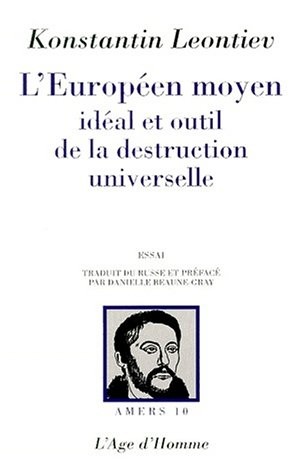 Wenn Konstantin Nikolajewitsch Leontjew schreibt, schlagen Bomben ein, die Schläfer wachrütteln und das Hässliche als Ziel haben: „O verhasste Gleichheit, o gemeine Gleichmacherei! O dreimal verfluchter Fortschritt! O furchtbarer, mit Blut getränkter, doch malerischer Berg der Weltgeschichte! Vom Ende des 18. Jahrhunderts an liegst du in den Wehen einer neuen Entbindung, aber aus deinem gequälten Schosse kriecht eine Maus hervor.“ Er war wohl einer der wenigen, neben Peter Ernst von Lasaulx oder Carl Friedrich Vollgraff, die im 19. Jahrhundert eine eigene pessimistische Geschichtsphilosophie entwarfen.
Wenn Konstantin Nikolajewitsch Leontjew schreibt, schlagen Bomben ein, die Schläfer wachrütteln und das Hässliche als Ziel haben: „O verhasste Gleichheit, o gemeine Gleichmacherei! O dreimal verfluchter Fortschritt! O furchtbarer, mit Blut getränkter, doch malerischer Berg der Weltgeschichte! Vom Ende des 18. Jahrhunderts an liegst du in den Wehen einer neuen Entbindung, aber aus deinem gequälten Schosse kriecht eine Maus hervor.“ Er war wohl einer der wenigen, neben Peter Ernst von Lasaulx oder Carl Friedrich Vollgraff, die im 19. Jahrhundert eine eigene pessimistische Geschichtsphilosophie entwarfen.


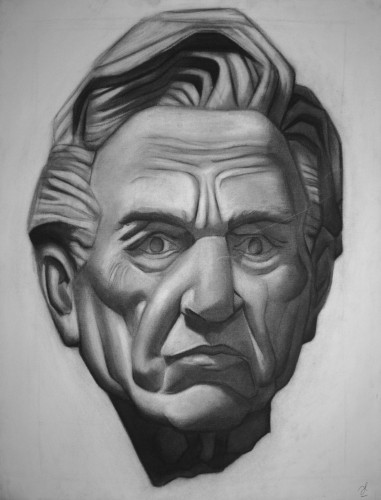


 del.icio.us
del.icio.us
 Digg
Digg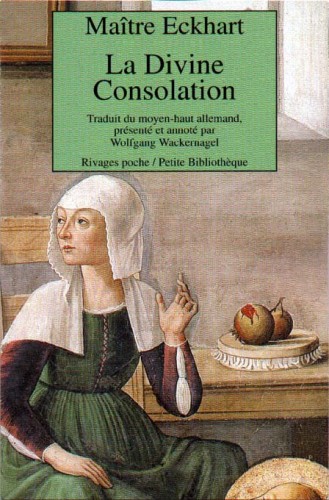
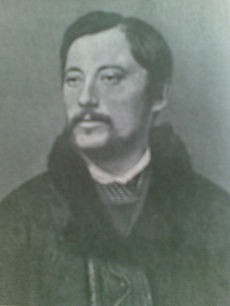 Der russische Schriftsteller, Religionsphilosoph und Aristokrat Konstantin Nikolajewitsch Leontjew galt vielen seiner Zeitgenossen als schwärzester Reaktionär. Und anders als sein kolumbianisches Pendant
Der russische Schriftsteller, Religionsphilosoph und Aristokrat Konstantin Nikolajewitsch Leontjew galt vielen seiner Zeitgenossen als schwärzester Reaktionär. Und anders als sein kolumbianisches Pendant 
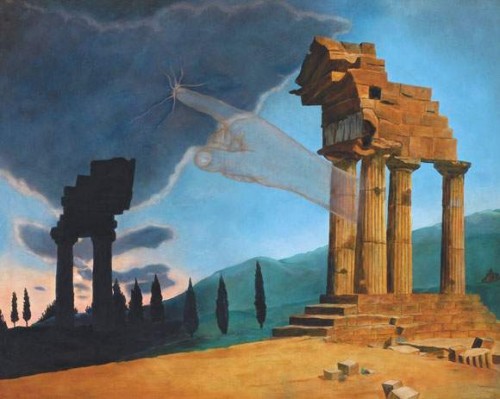






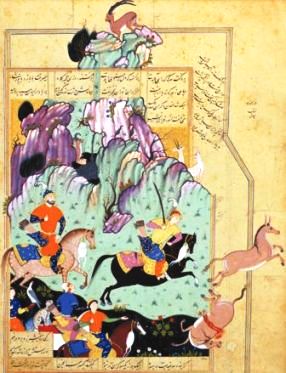
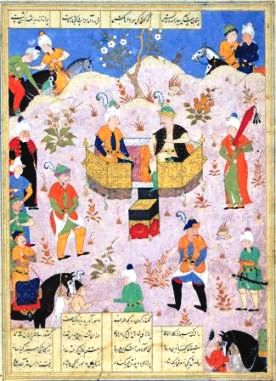
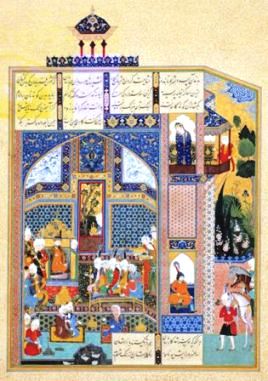
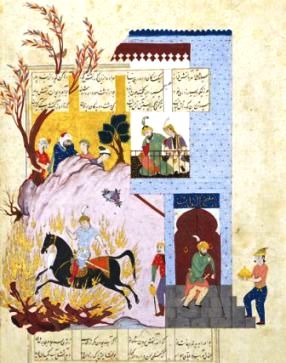

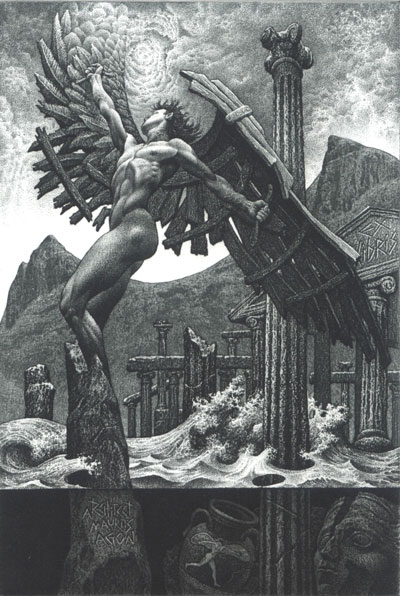

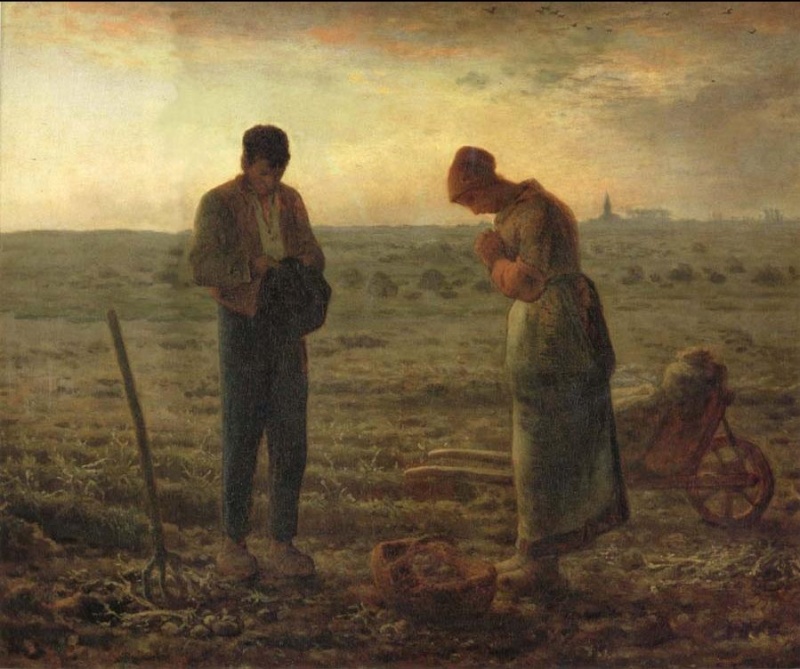


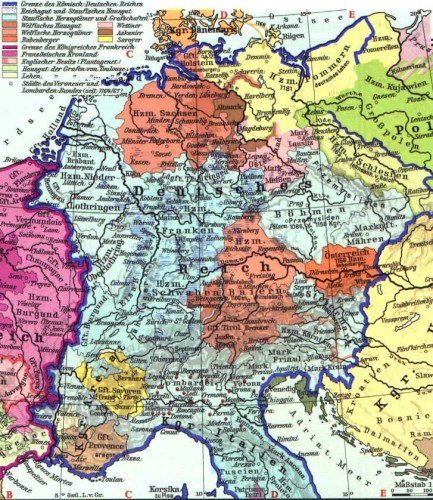





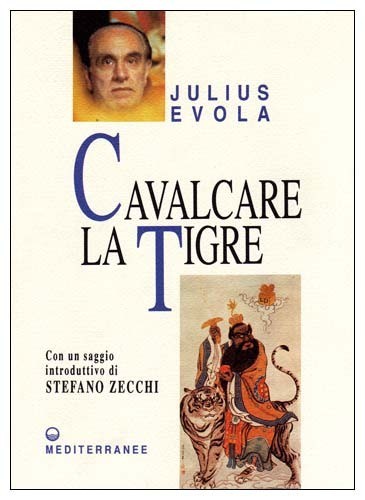 Este artículo será entendido perfectamente por los evolianos (gentes familiarizadas con el pensamiento de Julius Evola) y acaso sonará raro a quienes no se hayan aproximado hasta este autor que es considerado como el maestro de la “derecha tradicional” del siglo XX. En efecto, cuando Evola regreso a Italia en 1949 tras su periplo hospitalario tras la II Guerra Mundial, inmovilizado por las heridas en su médula, empezó a relacionarse con los medios activistas de la derecha radical, los neofascistas que formaban en las filas del entonces recientemente constituido Movimiento Social Italiano.
Este artículo será entendido perfectamente por los evolianos (gentes familiarizadas con el pensamiento de Julius Evola) y acaso sonará raro a quienes no se hayan aproximado hasta este autor que es considerado como el maestro de la “derecha tradicional” del siglo XX. En efecto, cuando Evola regreso a Italia en 1949 tras su periplo hospitalario tras la II Guerra Mundial, inmovilizado por las heridas en su médula, empezó a relacionarse con los medios activistas de la derecha radical, los neofascistas que formaban en las filas del entonces recientemente constituido Movimiento Social Italiano.
 Les années suivantes, jusqu’en 1936, le voient suivre les cours de Massignon, Gilson, Puech, Benveniste, Koyré, à Paris et surtout accomplir plusieurs séjours en Allemagne, à Bonn, Hambourg et Marburg, où il découvrira Swedenborg, « dont l’œuvre immense, dira-t-il, allait ainsi m’accompagner tout au long de ma vie », et où il fera la connaissance de Rudolf Otto, en 1930 : « Comment dire l’éblouissement d’un jeune philosophe débarquant à Marburg au début de juillet 1930 ? L’enchantement des lieux, de cette « colline inspirée » ne vivant que par et pour l’Université, les magnifiques forêts alentour… ». Quelques années plus tard, c’est à Freiburg, durant le printemps 1934, qu’il rendra visite au philosophe Heidegger – qu’il rencontrera à plusieurs reprises ensuite et dont il sera le premier traducteur en France, avec Qu’est-ce que la métaphysique ? en 1939.
Les années suivantes, jusqu’en 1936, le voient suivre les cours de Massignon, Gilson, Puech, Benveniste, Koyré, à Paris et surtout accomplir plusieurs séjours en Allemagne, à Bonn, Hambourg et Marburg, où il découvrira Swedenborg, « dont l’œuvre immense, dira-t-il, allait ainsi m’accompagner tout au long de ma vie », et où il fera la connaissance de Rudolf Otto, en 1930 : « Comment dire l’éblouissement d’un jeune philosophe débarquant à Marburg au début de juillet 1930 ? L’enchantement des lieux, de cette « colline inspirée » ne vivant que par et pour l’Université, les magnifiques forêts alentour… ». Quelques années plus tard, c’est à Freiburg, durant le printemps 1934, qu’il rendra visite au philosophe Heidegger – qu’il rencontrera à plusieurs reprises ensuite et dont il sera le premier traducteur en France, avec Qu’est-ce que la métaphysique ? en 1939.  En 1959, paraît son Imagination créatrice dans le soufisme d’Ibn ‘Arabî dont la rédaction fut, selon ses propres termes, « un nouveau point de départ, un moment privilégié dont la clarté illumina la route suivie depuis lors », puis en 1961, grâce à Marie-Madeleine Davy, Terre céleste et corps de résurrection
En 1959, paraît son Imagination créatrice dans le soufisme d’Ibn ‘Arabî dont la rédaction fut, selon ses propres termes, « un nouveau point de départ, un moment privilégié dont la clarté illumina la route suivie depuis lors », puis en 1961, grâce à Marie-Madeleine Davy, Terre céleste et corps de résurrection  Dans le premier de ces ouvrages, L’Imagination créatrice dans le soufisme d’Ibn ‘Arabî, il dira : « Que l’on entende pas le mot « images » au sens où de nos jours on parle à tort et à travers d’une civilisation de l’image ; il ne s’agit jamais là que d’images restant au niveau des perceptions sensibles, nullement de perceptions visionnaires. Le mundus imaginalis de la théosophie mystique visionnaire est un monde qui n’est plus le monde empirique de la perception sensible, tout en n’étant pas encore le monde de l’intuition intellective des purs intelligibles. Monde entre-deux, monde médian et médiateur, sans lequel tous les événements de l’histoire sacrale et prophétique deviennent de l’irréel, parce que c’est en ce monde-là que ces événements ont lieu, ont leur « lieu ».
Dans le premier de ces ouvrages, L’Imagination créatrice dans le soufisme d’Ibn ‘Arabî, il dira : « Que l’on entende pas le mot « images » au sens où de nos jours on parle à tort et à travers d’une civilisation de l’image ; il ne s’agit jamais là que d’images restant au niveau des perceptions sensibles, nullement de perceptions visionnaires. Le mundus imaginalis de la théosophie mystique visionnaire est un monde qui n’est plus le monde empirique de la perception sensible, tout en n’étant pas encore le monde de l’intuition intellective des purs intelligibles. Monde entre-deux, monde médian et médiateur, sans lequel tous les événements de l’histoire sacrale et prophétique deviennent de l’irréel, parce que c’est en ce monde-là que ces événements ont lieu, ont leur « lieu ».

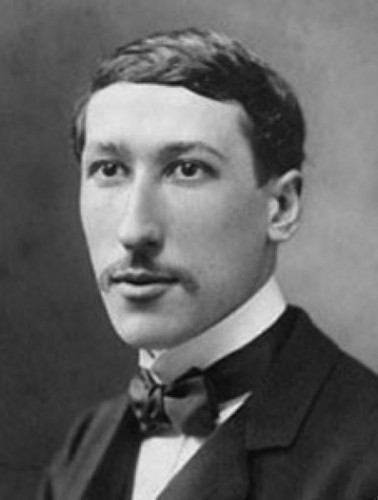

 In Italia gli anni fra il 1927 ed il 1929 sono segnati da una vicenda spirituale, esoterica e culturale, sconosciuta al grande pubblico e poco esaminata dagli storici, ma che, nondimeno, è una esperienza importante perché é la più significativa della cultura esoterica italiana (ed anche europea) del Novecento: il Gruppo di Ur, diretto dal filosofo
In Italia gli anni fra il 1927 ed il 1929 sono segnati da una vicenda spirituale, esoterica e culturale, sconosciuta al grande pubblico e poco esaminata dagli storici, ma che, nondimeno, è una esperienza importante perché é la più significativa della cultura esoterica italiana (ed anche europea) del Novecento: il Gruppo di Ur, diretto dal filosofo 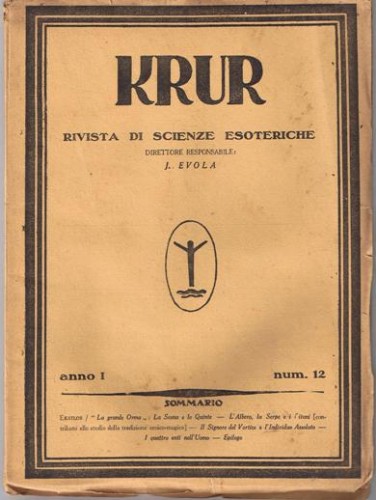
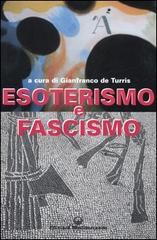
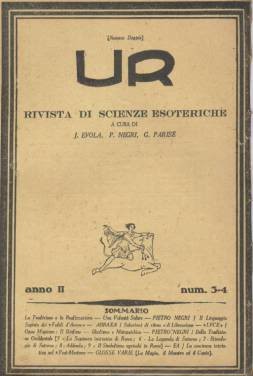 Le monografie della rivista furono poi raccolte in volume col titolo della rivista e poi, nella loro prima riedizione (1955, a cura dell’editore Bocca di Milano, poi per le Edizioni Mediterranee di Roma nel 1971) presero il titolo di Introduzione alla Magia, aggiungendo come sottotitolo “quale Scienza dell’Io”.
Le monografie della rivista furono poi raccolte in volume col titolo della rivista e poi, nella loro prima riedizione (1955, a cura dell’editore Bocca di Milano, poi per le Edizioni Mediterranee di Roma nel 1971) presero il titolo di Introduzione alla Magia, aggiungendo come sottotitolo “quale Scienza dell’Io”.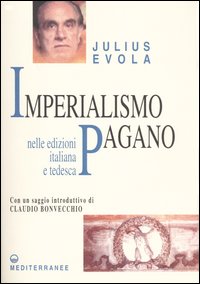


 In keeping with his contemptuous view of modernity, Evola regarded modern sexual mores and forms of expression as degenerate. Just as Evola rejected modern evolutionary biology, so did he also oppose twentieth century approaches to the understanding of sexuality of the kind found in such fields as sociobiology, psychology, and the newly emergent discipline of sexology. Interestingly, Evola did not view the reproductive instinct in mankind to be the principal force driving sexuality and he criticized these academic disciplines for their efforts to interpret sexuality in terms of reproductive drives, regarding these efforts as a reflection of the materialistic reductionism which he so bitterly opposed. Evola’s use of the term “metaphysics” with regards to sexuality represents in part his efforts to differentiate what he considered to be the “first principles” of human sexuality from the merely biological instinct for the reproduction of the species, which he regarded as being among the basest and least meaningful aspects of sex. It is also interesting to note at this point that Evola himself never married or had children of his own. Nor is it known to what degree his own paralysis generated by injuries sustained during World War Two as a result of a 1945 Soviet bombing raid on Vienna affected his own reproductive capabilities or his views of sexuality.
In keeping with his contemptuous view of modernity, Evola regarded modern sexual mores and forms of expression as degenerate. Just as Evola rejected modern evolutionary biology, so did he also oppose twentieth century approaches to the understanding of sexuality of the kind found in such fields as sociobiology, psychology, and the newly emergent discipline of sexology. Interestingly, Evola did not view the reproductive instinct in mankind to be the principal force driving sexuality and he criticized these academic disciplines for their efforts to interpret sexuality in terms of reproductive drives, regarding these efforts as a reflection of the materialistic reductionism which he so bitterly opposed. Evola’s use of the term “metaphysics” with regards to sexuality represents in part his efforts to differentiate what he considered to be the “first principles” of human sexuality from the merely biological instinct for the reproduction of the species, which he regarded as being among the basest and least meaningful aspects of sex. It is also interesting to note at this point that Evola himself never married or had children of his own. Nor is it known to what degree his own paralysis generated by injuries sustained during World War Two as a result of a 1945 Soviet bombing raid on Vienna affected his own reproductive capabilities or his views of sexuality.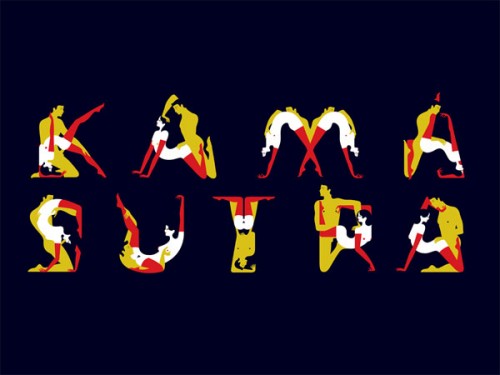


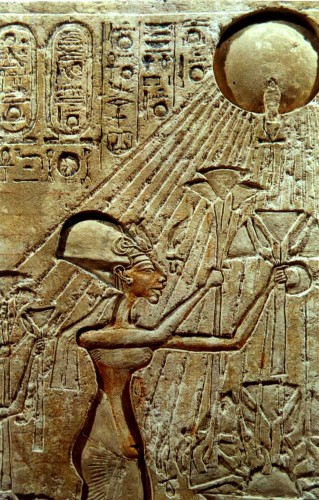 Savitri Devi demeure une figure énigmatique dans l’histoire récente. Elle est probablement le mieux connue comme la « prêtresse d’Hitler »,[1] une partisane farouchement impénitente de l’Allemagne nationale-socialiste, et portée au mysticisme. On se rappelle probablement d’elle de cette manière parce que cela nous permet de catégoriser ses idées. Si on se rappelle d’elle un jour, ce sera précisément à cause de l’absence de « mal pur » chez elle, cette étrange qualité qui est attribuée à d’autres figures nationale-socialistes dans le but de les rejeter. Le paradoxe qu’elle incarne, celui d’une nazie déclarée et aimante, est trop incompréhensible pour que certains puissent même l’examiner.
Savitri Devi demeure une figure énigmatique dans l’histoire récente. Elle est probablement le mieux connue comme la « prêtresse d’Hitler »,[1] une partisane farouchement impénitente de l’Allemagne nationale-socialiste, et portée au mysticisme. On se rappelle probablement d’elle de cette manière parce que cela nous permet de catégoriser ses idées. Si on se rappelle d’elle un jour, ce sera précisément à cause de l’absence de « mal pur » chez elle, cette étrange qualité qui est attribuée à d’autres figures nationale-socialistes dans le but de les rejeter. Le paradoxe qu’elle incarne, celui d’une nazie déclarée et aimante, est trop incompréhensible pour que certains puissent même l’examiner.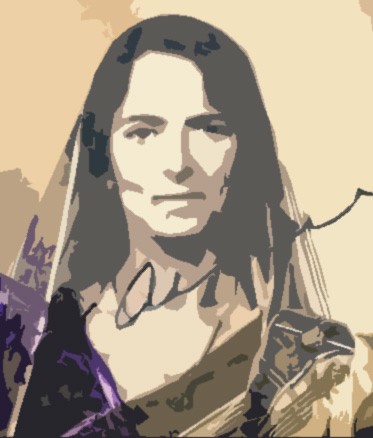
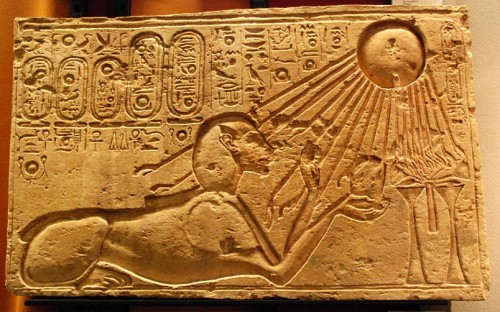



par Arefeh Hedajazi
Ex: http://mediabenews.wordpress.be/